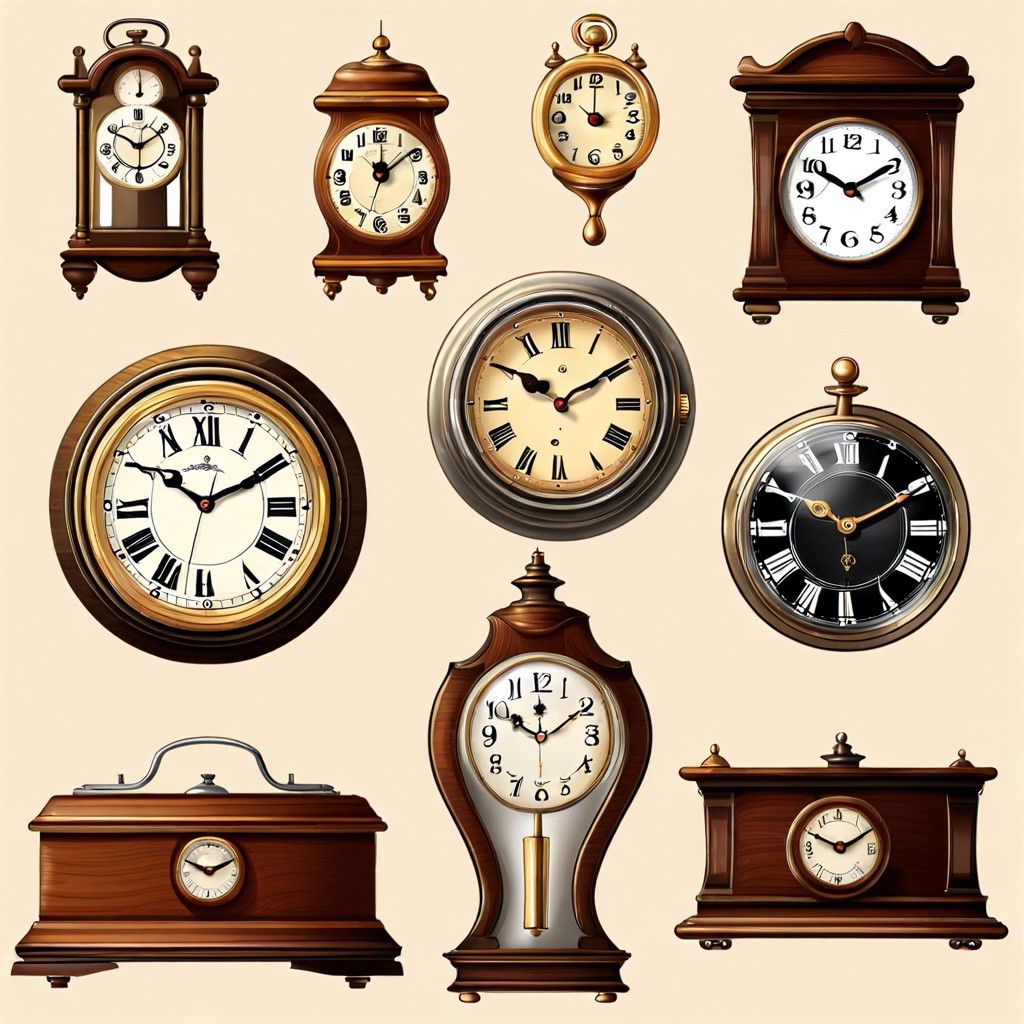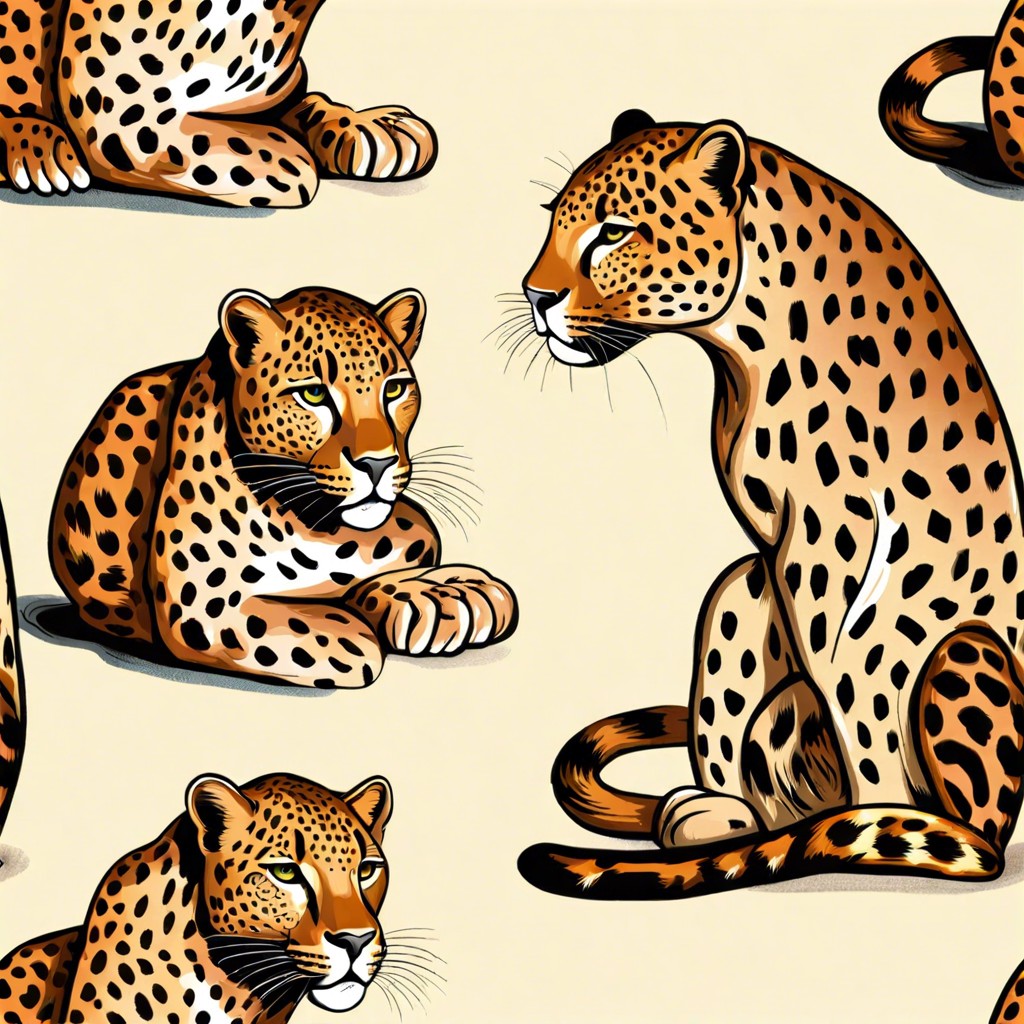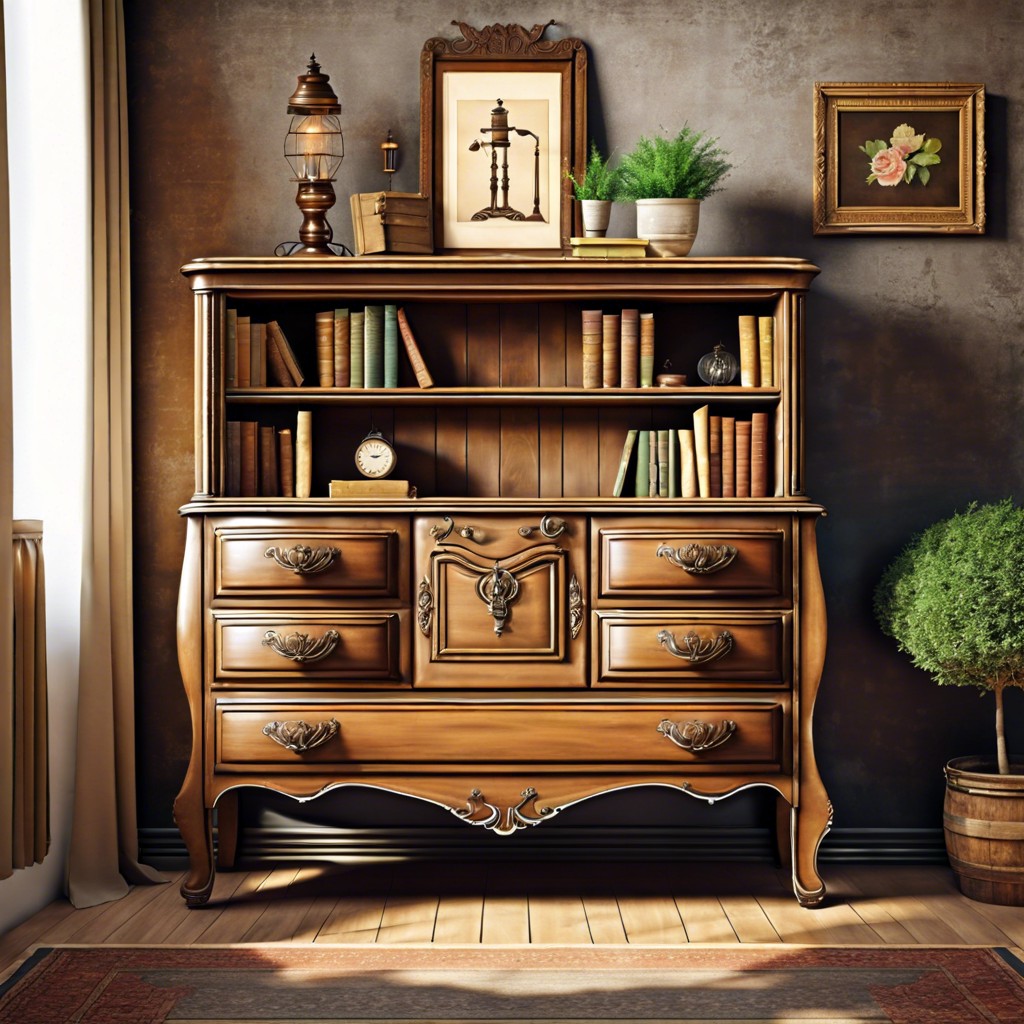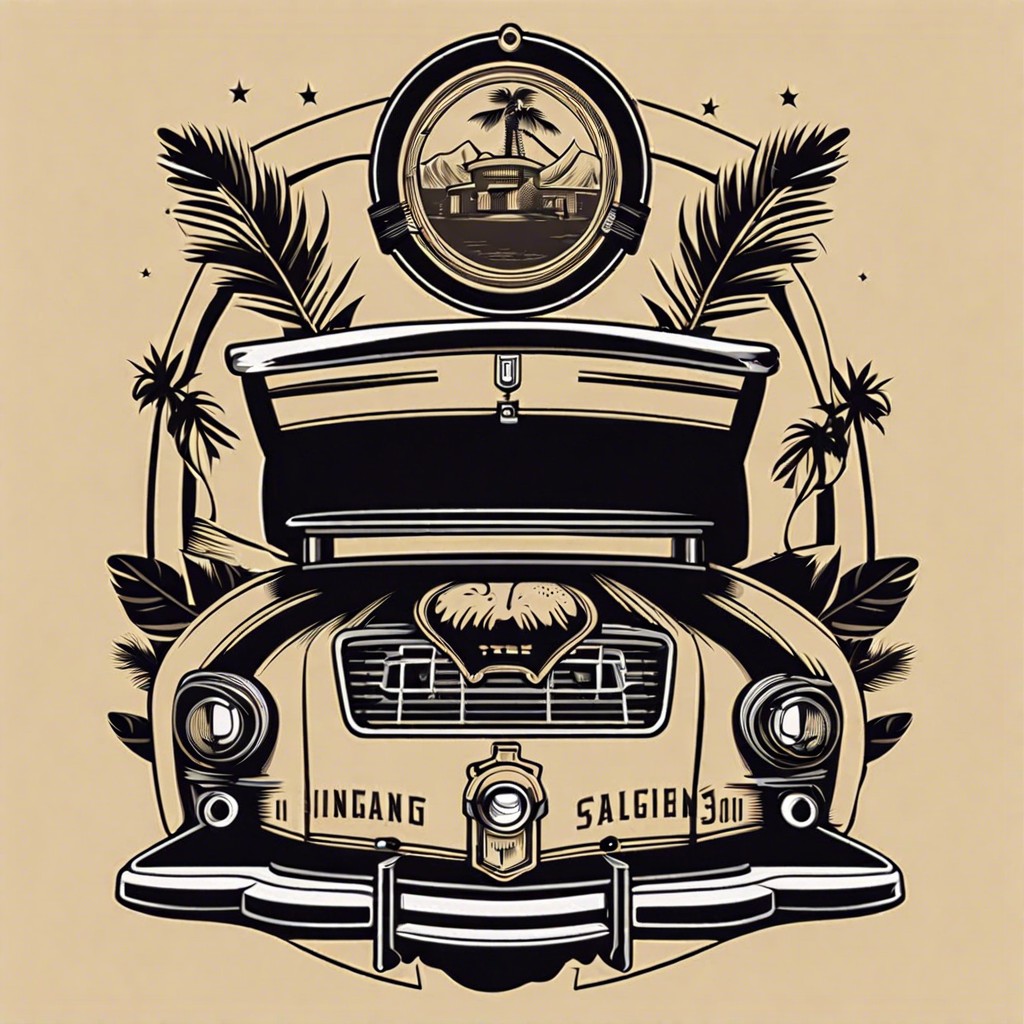Last updated on
Discover the timeless charm and intricate mechanics of vintage clocks, and learn how to identify and appreciate their value.
Key takeaways:
- Vintage clocks offer a glimpse into history and craftsmanship.
- Different types include cuckoo clocks, grandfather clocks, and mantel clocks.
- Rarity and provenance can significantly impact a clock’s value.
- Proper care and maintenance are crucial for preserving the clock’s history.
- Factors like maker’s mark, condition, rarity, provenance, and market demand determine a clock’s value.
History of Vintage Clocks

The concept of measuring time dates back to ancient civilizations, with the earliest clocks relying on sundials and water flows. Fast forward a few centuries, and the mechanical clock emerges in Europe during the 14th century, revolutionizing timekeeping with gears and escapements. The charm of these early designs lies in their craftsmanship and the intricate mechanics, which were often housed in beautifully decorated cases.
By the 17th and 18th centuries, craftsmanship had evolved, and clockmakers began producing more precise and ornate timepieces. This era introduced the longcase or grandfather clocks, which became fixtures in homes of the well-to-do, boasting elongated wooden cases and striking pendulums. These clocks were not just functional; they were statement pieces that spoke volumes about the owner’s status.
In the 19th century, with industrial advancements, clocks became more accessible to the general public, fostering a wave of innovation in design and production. During this time, mantle clocks and carriage clocks gained popularity for their portability and decorative appeal, often featuring brass, porcelain, and inlaid wood.
As we delve deeper into the peculiarities of these eras, it becomes apparent that vintage clocks are not merely tools for telling time but are artifacts that offer a glimpse into the cultural and technological zeitgeist of their times.
Different Types of Vintage Clocks

From swinging pendulums to the soothing tick-tock of a mantel, vintage clocks serve as a nostalgic reminder of the past.
Cuckoo clocks charm with their intricate carvings and delightful automations, often depicting forest scenes and invoking the essence of a rustic mountaintop chalet. Their sound alone can transport you to another era.
Grandfather clocks, standing tall and stately, demand attention in any room. These timepieces combine art and functionality, often showcasing skillful woodwork and melodious chimes that ring out the hours.
Mantel clocks, smaller and versatile, were the staples of 18th and 19th-century decor. They range from simple wood cases to ornate designs featuring brass and inlays, perfect for perching above the fireplace for a cozy, homey feel.
Railroad watches, rugged and reliable, tell tales of precision. Essential for maintaining timetables, these watches have a utilitarian charm augmented by their critical role in history.
Each type embodies its era and craftsmanship, bringing a slice of history into the present.
Rarity and Collectibility of Various Clock Types
Collecting vintage clocks is not just about filling up space on your mantel; it’s about history, craftsmanship, and sometimes, a bit of prestige. Rarity plays a big role in collectibility, pushing some clocks into the “I-sold-my-kidney-for-this” price range. For example, if you stumble upon an 18th-century Tompion, congratulate yourself; you’ve hit the horological jackpot.
Cuckoo clocks from the Black Forest and elegant French mantel clocks both hold their charm and collectors’ interest due to their distinctive mechanics and artistic designs. Each type attracts different collectors who either have a penchant for quirky birds popping out of clocks or prefer the aristocratic allure of ornate gilt bronze.
Survival rate also impacts rarity. Wooden clocks weren’t as robust as their metal counterparts, so finding one in good condition can be a cause for celebration—or at least a brag-worthy Instagram post.
In terms of collectibility, look for provenance or unique features—a clock owned by someone famous or one that boasts an unusual mechanism. These factors can enhance a clock’s value significantly.
Always scan for signs of original components and minimal restoration. While a shiny, like-new appearance might catch your eye, the untouched, slightly worn clocks often hold more value in a collector’s eye. Mysterious as they are, these ticking treasures tell tales from times past and, when chosen wisely, can be a rewarding investment.
Care and Maintenance of Vintage Clocks
Maintaining a vintage clock isn’t just about keeping time; it’s about preserving history. Whether you have a mantel masterpiece or a grandfather that’s the talk of your living room, here are some clock care basics:
Dust regularly – The enemy of mechanical devices is dust. Use a soft brush or a gentle burst of air to keep the intricate parts of your clock dust-free.
Oil wisely – Like any machine with moving parts, clocks need lubing. However, clock oil isn’t your standard WD-40. Use oils specifically designed for clocks and apply sparingly every few years. Over-oiling can attract dust and gum up the works.
Avoid harsh environments – Sunlight might seem like it adds a nice glow to your clock, but it can lead to faded faces and warped wood. Humidity encourages rust and other metal woes. Keep your clock in a stable, controlled environment.
Handle with care – Moving your clock can be like a game of Operation, but with higher stakes. Always remove the pendulum and any weights before moving a large clock. If in doubt, consult a professional.
By sticking to these simple strategies, your clock will tick along happily and remain a conversation starter for generations.
How to Determine the Value of Vintage Clocks
Determining the value of a vintage clock can feel like you’re turning back the hands of time, but don’t worry, it’s not as complicated as fixing a broken cogwheel! Here are a few pointers to clock in on:
– Check the Maker’s Mark: A signature or logo from a renowned maker can significantly increase a clock’s value. For instance, clocks made by Seth Thomas or Gustav Becker are often prized collectibles.
– Assess the Condition: Just like in real estate, condition matters! A clock that functions smoothly and has maintained its original parts and paint is more valuable than one that has undergone significant repairs or alterations.
– Research its Rarity: Is your clock common, or is it a rare find? Limited edition models or those from a pivotal historical period can fetch a higher price.
– Provenance Matters: A clock with a traceable history or one that belonged to a notable person can increase its worth. Make sure to provide any documents or stories associated with its history.
– Market Demand: Just because a clock is old doesn’t mean it’s in high demand. Check recent auction results and collector forums to gauge current interest and market trends.
This checklist should help you tick the right boxes when valuing a vintage clock. Remember, a little research can lead to timely rewards!




